Air cooled
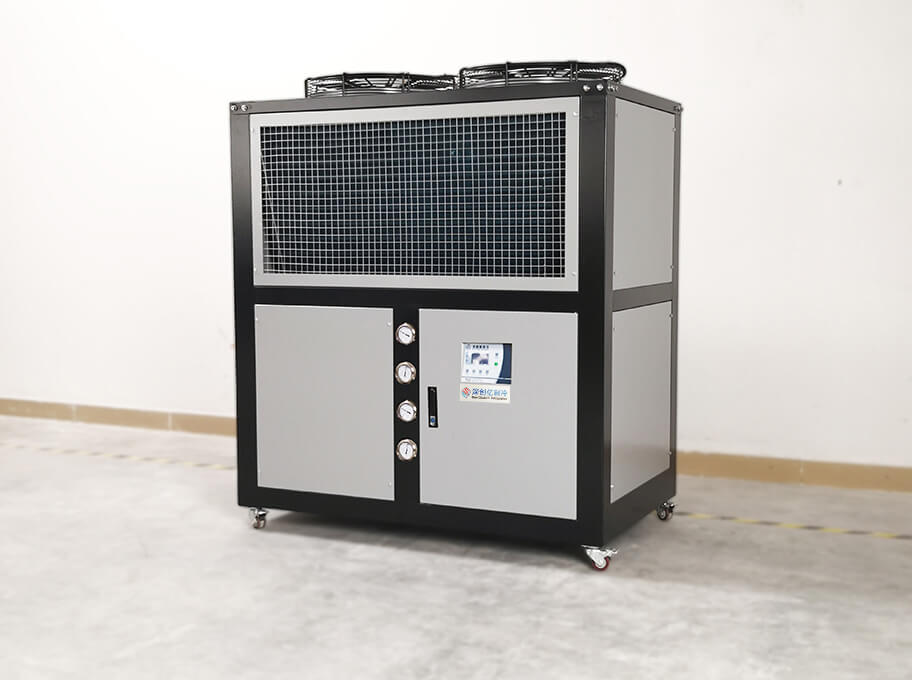
“Air-cooled” refers to a chiller system that leverages the surrounding ambient air to condense the refrigerant back into its liquid state, effectively cooling the system.
Water Cooled
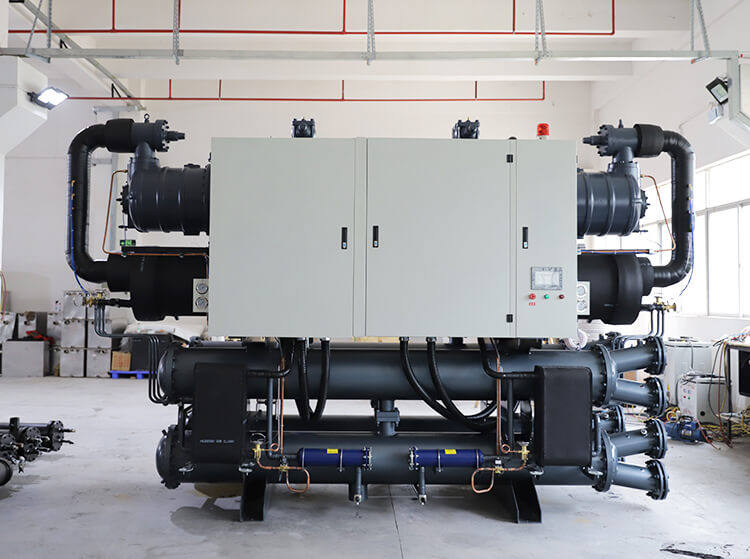
“Water-cooled” refers to a type of chiller system that absorbs heat from process water and transfers it to a separate external water source like a cooling tower, river, or pond. This type of chiller is often employed for large-capacity applications, especially where the heat produced by an air-cooled chiller would cause issues. Water-cooled chillers are the preferred choice when a cooling tower is already present or when the goal is to optimize energy consumption efficiency. However, they require regular condenser water treatment to prevent mineral buildup, which can impede heat transfer and reduce the system’s overall efficiency.
Capacity
“Capacity” in the context of a chiller refers to the maximum cooling output that the chiller is designed to provide under peak load conditions. The cooling output or capacity can usually be regulated in most chillers to match the real-time cooling demand closely. This capacity is often expressed in units of kilowatts (kW) or tons of refrigeration (TR), signifying the cooling power of the chiller system.
Evaporator
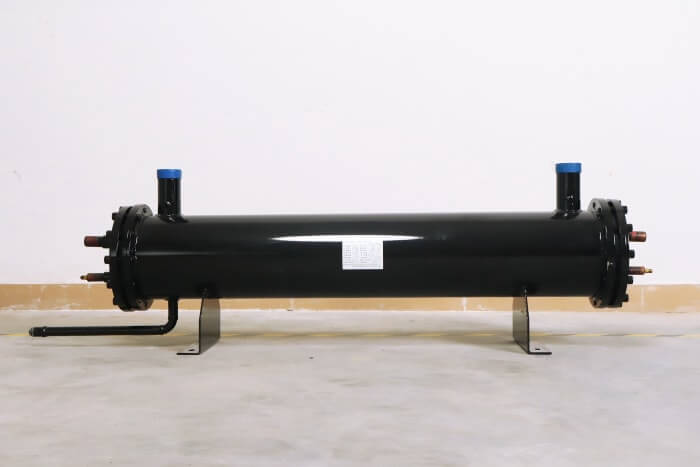
The “Evaporator” is a crucial component in a chiller system where the unwanted heat from the environment (such as a building) is absorbed before being conveyed to the condenser. As this excess heat enters the evaporator, it prompts the refrigerant within to boil and evaporate, effectively capturing and carrying away the heat towards the condenser. In this process, the refrigerant enters the evaporator as a low-pressure liquid and exits as a low-pressure vapor, effectively absorbing and transporting the heat away from the source.
Cooling Tower

A “Cooling Tower” functions as a substantial heat exchanger within the chiller system. It facilitates the cooling of water, which, in turn, helps extract heat from the coolant in the chiller. As this cooling water interacts with air within the tower, a portion of it evaporates, consequently reducing its overall temperature – a process often referred to as “evaporative cooling”. This cooled water is then recycled back into the system, effectively managing heat levels within the chiller.
Refrigerant
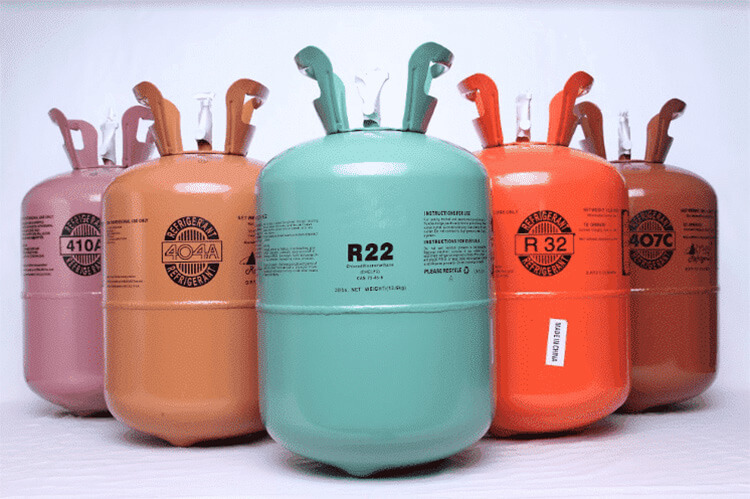
“Refrigerant” is a term given to any substance used in a chiller to cool water. This process occurs within a heat exchanger or evaporator. Characterized by a low boiling point, these substances, which include the likes of Freon and ammonia, facilitate the heat transfer process, efficiently reducing the temperature of the water in the chiller system.
Compressor
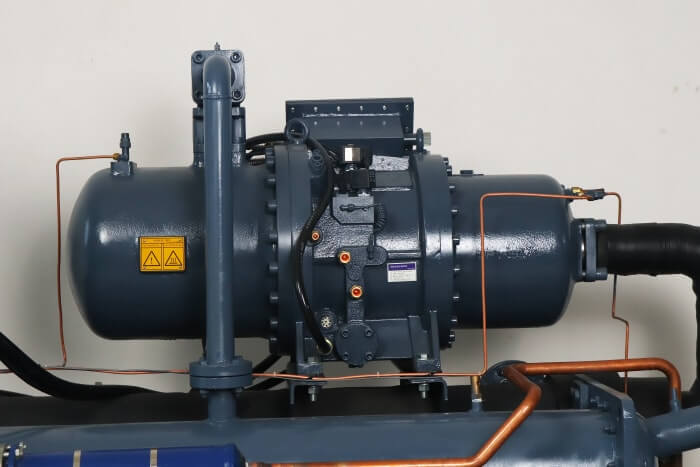
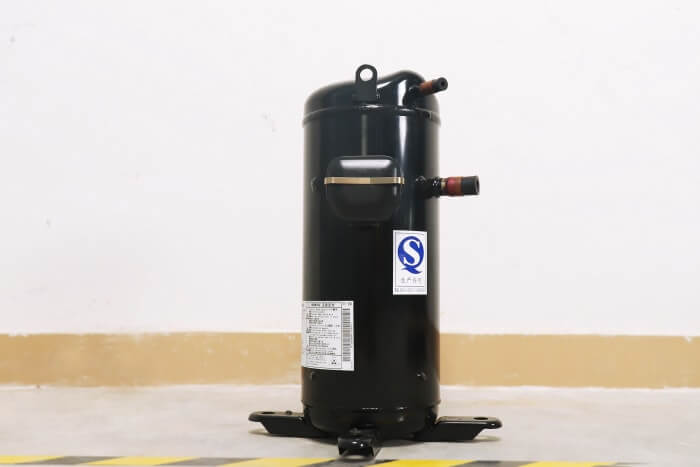
A compressor in a refrigeration circuit compresses cool low pressure refrigerant gas to hot high pressure refrigerant gas that is then condensed back into a liquid to be used again.
Chilled water
“Chilled Water” is the water generated by the chiller, circulating in a closed-loop system between the chiller’s evaporator and the cooling coils within the structure. This circulation is facilitated by a pump, which drives the chilled water around the building, towards the coils in the Air Handling Units (AHUs) and Fan Coil Units (FCUs). Here, unwanted heat from the air transfers into the water, thereby cooling the air and warming the chilled water.
This warmed chilled water then returns to the chiller evaporator, where it dispels the unwanted heat. This heat dispersion causes the refrigerant to boil, carrying the heat away and subsequently cooling the water once again. The water then continues its cycle, collecting more heat.
The typical temperature of the chilled water varies; however, the average flow and return temperatures are approximately 6°C (42.8°F) and 12°C (53.6°F), respectively. These figures can vary depending on the specific circumstances and setup.
Condenser(Cooling) water
“Condenser Water” refers to the water flowing between the cooling tower and the condenser in a water-cooled chiller system. It collects the unwanted heat from the condenser, transferred from the refrigerant, and in some designs, also absorbs heat from the compressor. The condenser water then travels to the cooling tower, where the captured heat is expelled into the atmosphere. After releasing the heat, the water returns to the condenser to continue the heat collection process.
Typically, the condenser water flow temperature is around 32°C (89.6°F) and the return temperature is around 27°C (80.6°F). However, these temperatures can fluctuate based on specific system configurations and operational conditions.
